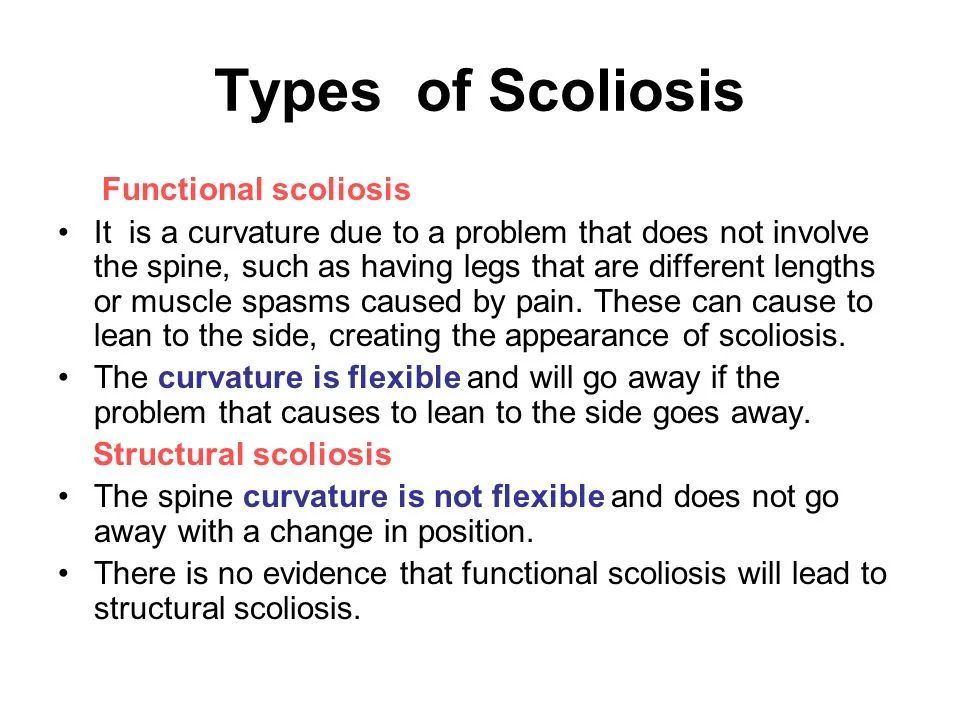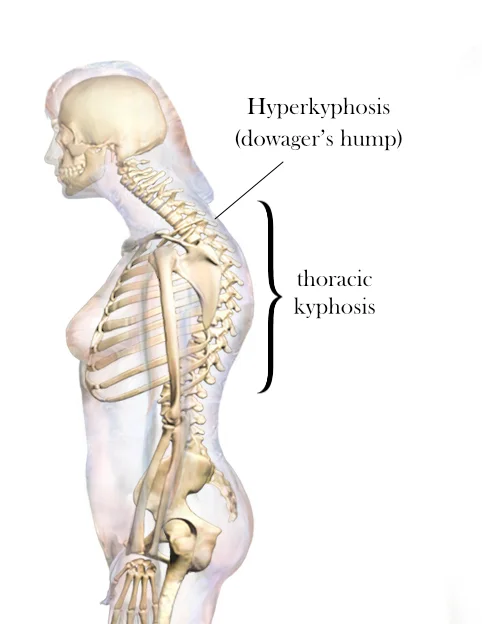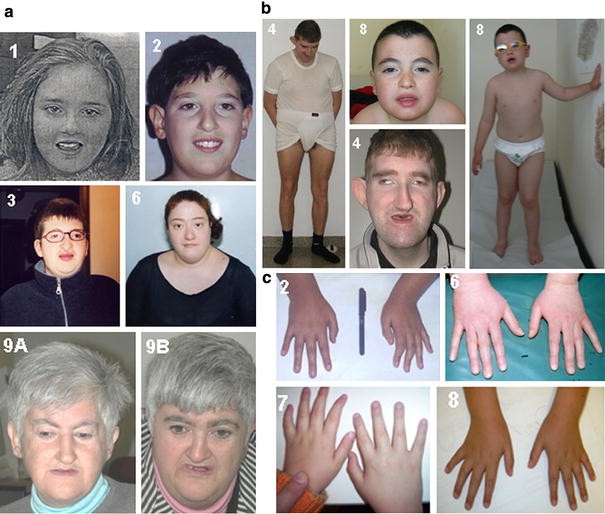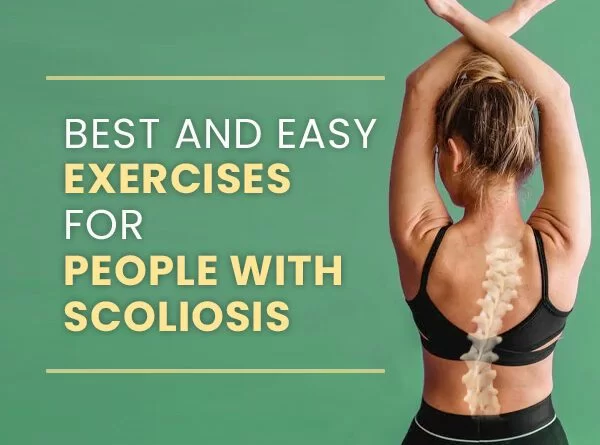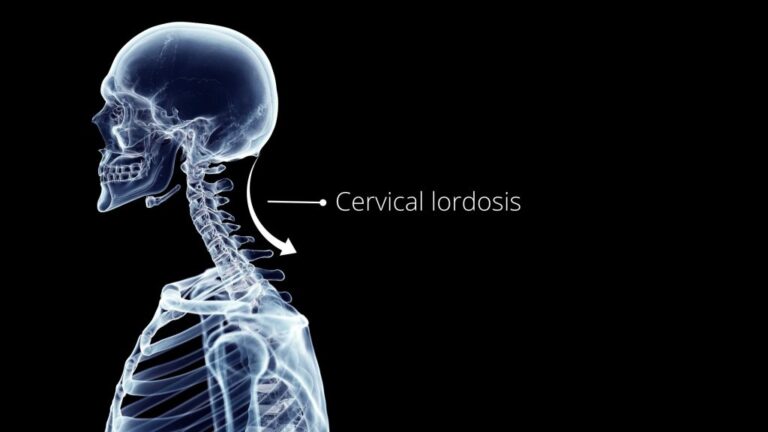Structural vs Functional Scoliosis: What is the Difference?
There are mainly two types of Scoliosis – functional scoliosis and structural scoliosis. To Differentiate between which type of scoliosis a patient is actually suffering from is useful in planning treatment.
In this article, you learn what is the difference between functional and structural scoliosis.
Table of Contents
Definition of structural scoliosis
when the patient’s spine actually has a physical curve.
Definition of Functional scoliosis
- when the spine appears to be curved, but the apparent curvature is actually the sign of an irregularity
- somewhere else in the body (e.g. different leg lengths).
Description of the scoliosis
- Generally speaking, these two categories are the most common categories of scoliosis – structural scoliosis and nonstructural scoliosis, also known as functional scoliosis, which is actually more of a posture problem or muscle imbalance rather than true scoliosis.
- True structural scoliosis includes spinal rotation and also a side-to-side curve of the spine of 10 degrees or more than 10 degrees. By definition, nonstructural scoliosis isn’t truly scoliosis because it does not appears in the rotation of the spine, and it appears to go away when the body is in various positions.
Structural scoliosis
- Structural scoliosis is when there is an actual ‘structural’ curve in the spine, which can improve over a period of time, if not
- treated in a proper way. There is no clear underlying cause for most cases of structural scoliosis, in spite of the fact that it can be caused by nerve or muscle disorders (like as cerebral palsy), birth disorders (like spina bifida), or an injury or tumor.
- As above mentioned, in order to fulfill the parameters needed for a structural scoliosis diagnosis, the abnormal sideways spinal curvature has to include rotation and be of a certain size: Cobb angle of 10+ degrees.
- ‘Cobb angle’ is the measurement used via the X-ray machine, that tells the doctor how far out of alignment a scoliotic spine is.
- Cobb angle takes place in a condition on its severity scale of mild, moderate, severe, or very severe.
Types of scoliosis on basis of cob angle
- Mild scoliosis-Cobb angle measurement is between 10 and 25 degrees
- Moderate scoliosis- Cobb angle measurement is between 25 and 40 degrees
- Severe scoliosis- Cobb angle measurement is more than 40+ degrees
- Very-severe scoliosis-Cobb angle measurement of 80+ degrees
Types of Structural Scoliosis
- As mentioned above, there are many different types of scoliosis, and we touched on how they are classified in terms of causation; the following are how the different forms fit under the ‘structural scoliosis’ umbrella.
Idiopathic Scoliosis-
- As mentioned, idiopathic scoliosis accounts for 80 percent of well-known diagnosed cases and has no single-known cause.
- This type is most commonly identified during adulthood, but it may develop at any age, including infants and young children.
- Idiopathic scoliosis is the most common type of scoliosis that adults face.
- For adults who have idiopathic scoliosis, most of these cases of AIS were undiagnosed and untreated in adolescence because the patients were simply unaware of their condition and progressed with it into maturity.
- Most often, the patient feels pain and it brings them to go for a diagnosis and treatment. Adolescents with scoliosis don’t generally find the condition painful, and mostly in mild forms, the condition isn’t known to develop many functional deficits, and even related postural changes maybe not be seen in all adults, other than a specialist to notice.
Neuromuscular Scoliosis-
- Neuromuscular scoliosis occurs as a secondary complication of a larger neuromuscular condition like as cerebral palsy, muscular dystrophy, spina bifida, and many more.
- In these conditions of scoliosis, there is a disconnect between the brain and the muscles and/or connective tissues that surround the spine and help provide it with support and stabilization.
- This condition is not as severe as the underlying cause of scoliosis, the neuromuscular condition, which has to guide the treatment approach. As there it includes the complication of the neuromuscular condition driving scoliosis, Doctors often can’t offer these patients the same level of treatment success that patient can with more critical types of the condition, although the potential to work towards improvement is there.
Degenerative Scoliosis-
- Degenerative scoliosis works in adults and tends to occur later in life as the spine faces degenerative changes.
- Spinal degeneration generally affects the joints and discs of the spine.
- Degenerative scoliosis is also known as ‘de Novo scoliosis, meaning the condition has developed new in adulthood with the previous history, as is the case with idiopathic scoliosis in adults.
- After idiopathic scoliosis, degenerative scoliosis is the next most common type of scoliosis that affects adults.
Congenital Scoliosis-
- The term “congenital scoliosis” refers to a spinal deformity caused by vertebrae that are not properly formed.
- This happens very early in development; in the first six weeks of embryonic formation.
- Congenital scoliosis does not seem to run in families.
- Genetic studies to date have not yielded much evidence that this condition can be inherited.
- Although congenital scoliosis is often discovered during the infant or toddler period, in some children it does not diagnose until their adolescent years.
Traumatic Scoliosis-
- Traumatic scoliosis is the infrequent form that’s caused by the spine experiencing some form of adverse trauma, such as in a car accident or fall.
- Moreover, traumatic scoliosis can also be caused by the presence of tumors pressing on the spine and forcing it out of alignment.
- Now that we have differentiated structural scoliosis and addressed its different types, let’s flip to functional scoliosis.
Functional Scoliosis-
- Functional scoliosis is when the patient appears to have a curve in their spine but it is originally caused by another condition, such as differentiation in leg length or a muscle spasm.
- This occurs because the body automatically tries to maintain symmetry.
- The spinal curve is the body’s way of compensating for the underlying problem when a person has functional scoliosis, they might present with an abnormal sideways curvature of the spine but will have no spinal rotation and the spine’s structure will still be normal.
- Therefore, functional scoliosis occurs by a temporary cause, like, chronic bad posture, or other irregularities in the body such as leg-length discrepancy (LLD).
- If a person with functional scoliosis tells to lay down or bend forward, the scoliotic curve would apparently go away with the position change; whereas with structural scoliosis, there is no change of position that will make the curvature go away.
- In cases of functional scoliosis that are caused by chronic bad posture, this can ideally be treated by suggesting the postural issues; exercises and stretches that help to improve good posture and elongate the spine can help.
- For cases of functional scoliosis that occurs by the leg-length discrepancy, this can also be easily treated with custom orthotics or insoles that fix the LLD, taking pressure off the spine and allowing its normal curvatures and alignment to its real position.
Signs and symptoms of scoliosis-
- Uneven shoulders
- One shoulder blade appears higher than the other shoulder blade
- Uneven waist
- One hip is higher than the other.
Risk factors:
- Risk factors for developing the most common form of scoliosis include:
Age- Signs and symptoms typically start during the growth spurt that occurs just prior to puberty.
Sex- Although both boys and girls develop mild scoliosis at about the same rate, girls are more prone to the risk of the curve worsening and requiring treatment.
How to Diagnosis?
- Scoliosis can run in families, but most children with scoliosis don’t have a family history of the disease.
- If someone thinks he or she has scoliosis, see a doctor for an examination. The doctor will ask questions, including if there is any family history of scoliosis, or if there has been any pain, weakness, or other medical problems.
- The physical examination involves looking at the curve of the spine from the sides, front, and back.
- The person will be asked to undress from the waist up to better see any abnormal curves, physical deformities, or uneven waist.
- The person will then bend over trying to touch their feet. This position can make the curve more prominent.
- The doctor will also check the symmetry level of the body to see if the hips and shoulders are at the same height, leaning to one side, or if there is sideways curvature.
- Any skin changes will also be identified that can suggest scoliosis because of birth defects. A doctor may check a patient’s range of motion, muscle strength, and reflexes.
Cobb angle measurement-

- A Cobb angle of 10 degrees is regarded as a minor angulation to define Scoliosis.
- A scoliosis curve of 10 to 15 degrees normally does not require any treatment and mostly recovers with regular exercise and braces.
- If the scoliosis curve is 20 to 40 degrees, the doctor will generally mention a back brace to keep the spine from developing more of a curve.
- The more growth that a person has remaining increases the chances of scoliosis getting worse.
- As a result, the doctor can measure the patient’s height and weight for comparison for upcoming visits.
- Other features of the amount of growth remaining are signs of puberty such as the presence of breasts or pubic hair and whether menstrual periods have begun in girls.
- If the doctor confirms that the patient has scoliosis, the patient could either be asked to return for an additional examination in several months to see if there are any particular changes or the doctor may suggest X-rays of the back. If X-rays are taken, the doctor can make measurements from them to determine how large of a curve is present. This can help decide what treatment, if any, is necessary.
- Measurements from future visits can be compared to see if the curve is getting worse.
- It is necessary that the doctor knows how much further growth the patient has left. Another x-ray of the hand, wrist, or pelvis can help determine how much more the patient will grow.
- If a doctor finds any difference in the function of the nerves, he or she may order other imaging tests of your spine, including an MRI or CT scan to look more closely at the bones and nerves of the spine.
- If the curve <20 degrees need observation and exercise, >20 requires treatment, between 20-40 required Milwaukee brace and physiotherapy exercise, and>40 surgical corrections are needed.
Treatment
Scoliosis treatments are different accordingly mild, moderate, and severe.
Mild scoliosis
- Do Not Require Any Medicine.
- Symptoms Are Not seen Easily.
- No Braces Require.
- Simple Corrective Physiotherapy Exercise is mandatory to normalize the curve.
- Follow up require at daily intervals.
Moderate Scoliosis :
- Pain, Muscle Spasm, And many Other Symptoms are visible and Require medical treatment.
- Medical treatments are mostly given according to the symptoms of the patient.
- Braces Are most important to reduce the curve.
- Physiotherapy Exercise more than two times a day.
- Spinal mobilization exercise.
- Muscle Strengthening And Stretching Exercise of spinal muscle.
Severe Scoliosis :
- symptoms are clearly visible and require medical and also sometimes surgical treatment.
- If symptoms are not progressive then medical, physiotherapy exercise, and Braces are enough but if the symptoms get worse then scoliosis surgery is mandatory.
- Most of the Surgery depends upon the severity and progressiveness of scoliosis.
- Braces And Physiotherapy treatment also require simultaneously.
- Post-operative Physiotherapy sessions are also important.
Physiotherapy Treatment of Scoliosis :
- Therapeutic exercise for scoliosis may include;
- Decrease symptoms like pain, fatigue, and trunk asymmetries
- Slow down or may stop patients’ scoliosis progression
- Improve flexibility and mobility
- Increase muscular strength and endurance
- Improve lung function and breathing
- Prevent instability due to spinal degeneration.
Scoliosis Exercises for Children–
- If your child has idiopathic scoliosis, they can still take the part in the activities and sports they enjoy.
- A scoliosis exercise program may help the child to adopt safe movement and posture habits that support their growing spine.
- “Most of the children who have scoliosis do not have scoliosis-related pain.
- With this state of mind, most scoliosis exercises for children mainly focus on neuromuscular control to promote spinal symmetry and realign the trunk.
Bird-dog stretches-
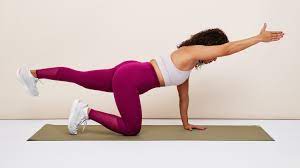
- In this type of exercise, The Patient may need an exercise mat.
- Place a flat pillow or folded towel under her knees for some extra cushioning.
- Patients can use a mirror to check their visual biofeedback.
Method –
- Begin with all fours in the tabletop position.
- Place her knees under her hips and her hands under her shoulders.
- Maintain a neutral spine by engaging her abdominal muscles.
- Draw your shoulder blades together.
- Raise her right arm and left leg, keeping the shoulders and hips parallel to the floor.
- Lengthen the back of her neck and tuck the chin into your chest to gaze down at the floor.
- Hold the position for some seconds, then lower back down to the starting position.
- Raise her left arm and right leg, holding this position for a few seconds.
- Return to the starting position. This is 1 round.
- furthermore, do the 2 to 3 sets of 8 to 12 repetitions.
Double leg abdominal press-
- Tells the patients to Lie on their back with their knees bent and their feet flat on the floor, keeping back in a neutral position.
- Raise her legs off the floor one at a time so that her knees and hips are bent at 90° angles.
- Push your hands to opposite your knees while pulling her knees toward her hands, which will emerge her abdominal muscles.
- Keep both arms straight.
- Hold for three deep breaths.
- Repeat ten (10) times per set.
- Do two (2) sets per session.
- Do one (1)session per day.
Prone plank-

- The plank is the normal stabilizing exercise that initiates muscles that supports the spine. Begin by laying on her
- stomach with both arms bent by your sides.
- Make sure that both of the elbows directly place under the shoulders and
- place her palms flat on the floor in front of her elbows.
- The patient’s body should be in a straight line from their feet to their head.
- Make sure that your spine stays in a neutral position, keep the abs tight, and bring both hips level to your shoulders.
- Hold this position for a few seconds according to her strength.
Straight leg raise-
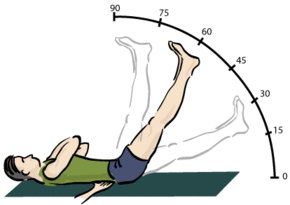
- Lie down on the mat on the floor, face up, legs extended.
- Place both hands under your lower back and glutes so the patient’s pelvis becomes stabilized.
- Begins to raise your legs toward the ceiling, pressing both thighs together and keeping the legs straight.
- Lift until her hips are fully flexed and you can’t go any higher with straight legs, then lower back down and repeat
Pelvic tilts-

- The pelvic tilt is used to strengthen a person’s abdominal muscles.
- Tells the person to lie on their back on the floor with their knees bent.
- Straighten the back against the floor by tightening the abdominal muscles and bending the pelvis up slightly.
- Hold this position for up to 10 seconds and repeat.
Cat-camel-

- come onto the person’s hands and knees, make sure that the person’s hands are under their shoulders, her knees are under their hips and her back is in a neutral position.
Cat:
- Sink the back down towards the floor and lift the head up at the same time, sticking the tailbone out to make a curve with your spine.
- Take a big amount of breath out at the same time.
Camel:
- Tuck the head and tailbone in, arching through the spine to mimic a camel hump.
- Take a big amount of breath in at the same time.
Scoliosis Exercises for Teens and adults;
Abdominal press-
- Start with lying down on their back, their feet flat on the ground, and their knees bent.
- Ensure that the back should be in a neutral, tension-free position. Lift both feet off the floor until their thighs and feet form a 90-degree angle, and her knees are above the hips.
- Use her both hands to push their knees away while concurrently pulling the knees toward her hands with their abdominal muscles.
- This is a static exercise, meaning the legs and arms should not be allowed to move while pressing.
- Hold the position for three full breaths and then relax. Furthermore do 2 sets of 10.
Sitting rotation stretch-
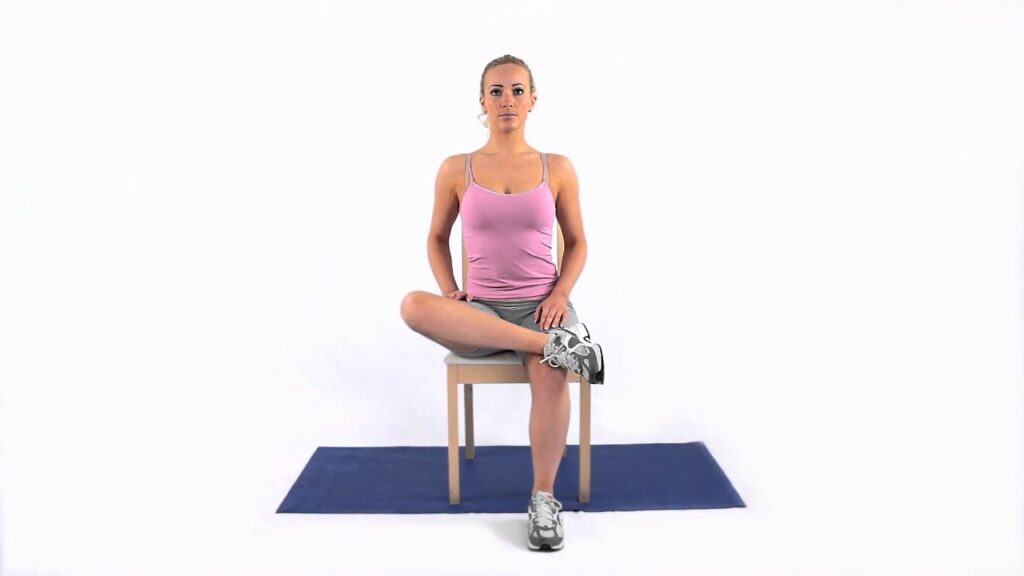
- To perform this stretch person has to sit on the floor with both legs straight in front of the therapist.
- Cross one leg over the other.
- Gently twist toward their bent leg, putting their hand behind the therapist for support.
- Place their opposite arm on her bent thigh and use it to help you turn further.
- Look over the shoulder and hold for 30 seconds.
- Gently come back to the center.
- Reverse leg positions and do the stretch on the other side.
- Repeat on both sides four times.
Plank-

- The plank is the normal stabilizing exercise that initiates muscles that supports the spine.
- Begin by laying on her stomach with both arms bent by your sides.
- Make sure that both of the elbows directly place under the shoulders and place her palms flat on the floor in front of her elbows.
- The patient’s body should be in a straight line from their feet to their head.
- Make sure that your spine stays in a neutral position, keep the abs tight, and bring both hips level to your shoulders.
- Hold this position for a few seconds according to her strength.
Pelvic tilts-
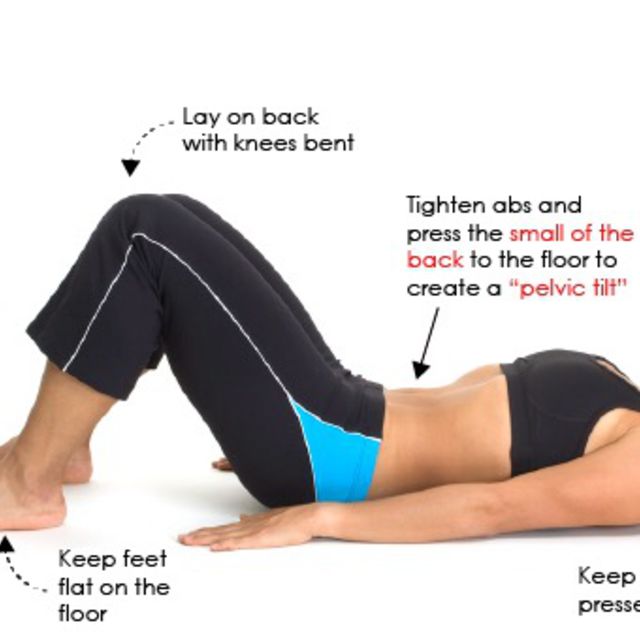
- The pelvic tilt is used to strengthen a person’s abdominal muscles.
- Tells the person to lie on their back on the floor with their knees bent.
- Straighten the back against the floor by tightening the abdominal muscles and bending the pelvis up slightly.
- Maintain for up to 10 seconds and repeat.
Kettlebell suitcase deadlift-
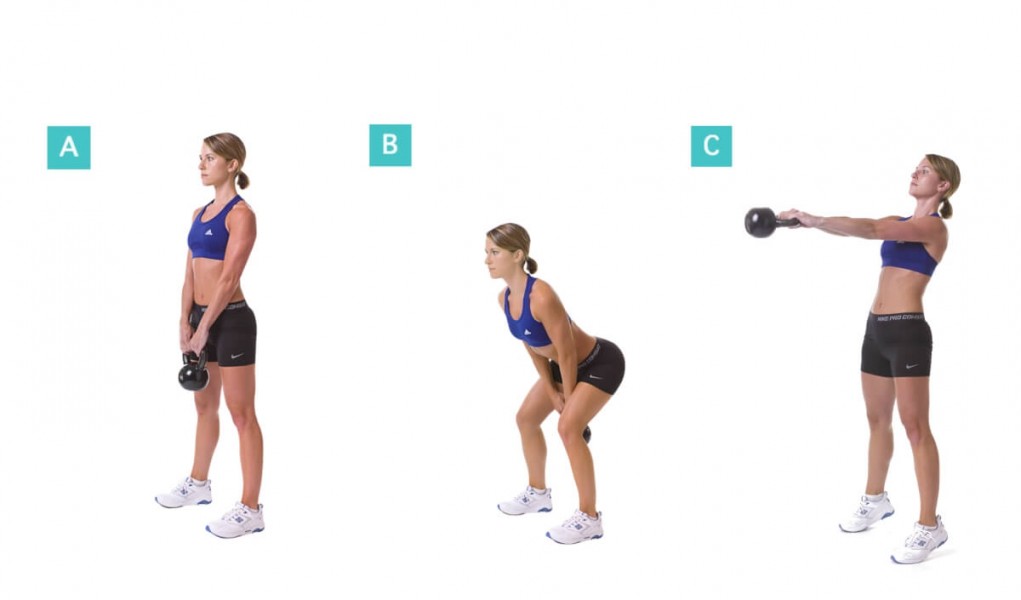
- Choose a kettlebell weight that a person can lift with one hand.
- Standing up straight with their feet hip-width apart.
- Put the kettlebell on the outside of their right foot.
- Hinge at the hips, bending their knees, keeping the spine straight. Grab the kettlebell.
- Stand up with a neutral spine to pick it up.
- Repeat this exercise 5 times.
Cat/cow-camel-

- Come onto the person’s hands and knees, make sure that the person’s hands are under their shoulders, her knees are under their hips and her back is in a neutral position.
- Sink the back down towards the floor and lift the head up at the same time, sticking the tailbone out to make a curve with your spine.
- Take a big amount of breath out at the same time.
Camel:
- Tuck the head and tailbone in, arching through the spine to mimic a camel hump.
- Take a big amount of breath in at the same time.
Child pose-

- In this exercise, the patient has to kneel and sit on their knees.
- Lean forward, keeping their buttocks on their heels, and rest their forehead on the floor.
- Move both arms so they’re next to their legs, palms facing up. Inhale and exhale, slowly and deeply, for up to eight breaths.
Seated butterfly stretch-
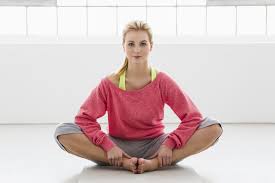
- Starts with seating on the floor with your legs in front of you.
- Reach forward and grab your right foot.
- It is ok to bend the knee to help her hand and foot connect.
- Gently pull the right foot up towards your groin bending until it is at a comfortable spot and the sole of the foot is facing your left thigh.
- Bend the left knee to bring your left foot toward your groin so that its sole touches the sole of your right foot. Hold the feet with their hands and rest both elbows on both knees.
- While keeping your back straight (no slouching), allow both knees to fall toward the ground.
- You may apply gentle pressure on the inner thigh by pressing gently on the knees with the elbows.
- You should experience gentle pulling and stretch in the groin.
- Maintain this position for 20 to 30 seconds.
- Release and repeat three times.
Strength training-
- One person’s flexibility is improved, and strength exercises may be incorporated to help stabilize the spine and decrease pain and discomfort.
- Exercises that focus only on building core muscle strength to support the spine are strongly suggested to help adults manage degenerative scoliosis pain.
Bird dog-

- Begin with all fours in the tabletop position.
- Place her knees under her hips and her hands under her shoulders.
- Maintain a neutral spine by engaging her abdominal muscles.
- Draw your shoulder blades together.
- Raise her right arm and left leg, keeping the shoulders and hips parallel to the floor.
- Lengthen the back of her neck and tuck the chin into your chest to gaze down at the floor.
- Hold the position for some seconds, then lower back down to the starting position.
- Raise her left arm and right leg, holding this position for a few seconds.
- Return to the starting position.
- This is 1 round, furthermore, do the 2 -3 sets of 8 to 12 repetitions.
Arm & leg raises-
- Starts with a lie on their front with their forehead on the ground.
- Extend their both arms straight over their head with their palms or fists on the ground.
- Make sure that both the straight.
- Raise their both arms and legs off of the ground.
- Maintain the position full breath, then lower their arms and legs back down.
- The goal for 15 repetitions.
Glute bridges-
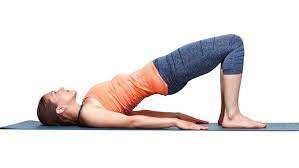
- Starts by tightening the abdominal and buttock muscles by pushing her low back into the ground.
- Raise both hips to create a straight line from both knees to your shoulders.
- Squeeze the core and pull the belly button back toward the spine.
- Maintain for 20 to 30 seconds.
- Lower the hips to the back position to the starting position.
Hip thrusts-
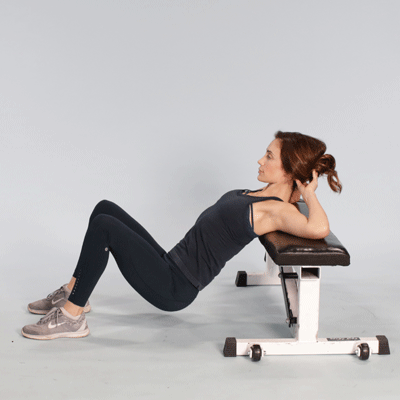
- Start with setting up your back against an elevated surface (such as a bench or a box) with both knees bent and feet flat on the ground.
- The bench should hit just below the shoulder blades, and the feet should be about shoulder-width apart.
- You may rest both elbows on the bench.
- Keeping the chin tucked, push through the heels until your thighs reach similar to the floor and both legs should form a 90-degree angle. Squeeze both glutes at the top, then return to start.
Physiotherapy Treatment After Surgery :
The first week of surgery :
- In vigorous chest PT, the patient turn to the side every 2 hours, active ROM exercise within the pain limit for the shoulder and ankle, and at the end full range of active and passive movement of hip and knee joint is carried out.
After one week :
- With assisted guidance patient was taught to sit, roll and stand and walking training. And Follow Up Strengthening Exercises of Weak Spinal Muscle Around the Upper Back, Middle Back, And Lower Back Area.
BRACES :
- If the patient has moderate scoliosis and the bones are used to growing, the doctor can prescribe a brace.
- This will prevent supplementary curvature, but will not cure or reverse it.
- Braces are generally worn not all the time, but also at night. The more hours per day the patient wears the braces, the more effective it tends to be.
There are two types of braces:
Thoracolumbosacral orthosis (TLSO) –

- The TLSO is constructed with the use of plastic and designed to fit methodically around the body’s curves. It is not generally visible under clothing.
Milwaukee brace –

- This type of brace is a full-torso brace and also involves a neck ring with rests for the chin and the back of the head.
- This type of brace is mostly used if the TLSO is not possible or ineffective.
Surgery :
- Severe scoliosis typically get worsens over a period of time, doctors suggest scoliosis surgery to overcome the severity of the spinal curve and to prevent it from getting worse.
Vertebrae Fusion surgery-
In Spinal Fusion Surgery–
- Doctors connect two or more of the bones in the spine (vertebrae) together, so they can’t shift independently.
- Pieces of bone or bone-like material are placed among the vertebrae.
- Metal rods, hooks, screws, and wires typically lock that part of the spine to keep the spine straight and still while the old and new bone material fuses together.
- Spinal Fusion is a restricted movement that’s why most minor preference options in scoliosis.
The difference between functional and structural scoliosis Table
| STRUCTURAL SCOLIOSIS | FUNCTIONAL SCOLIOSIS | |
| Definition | patient’s spine actually has a physical curve. | spine appears to be curved, but the apparent curvature is actually a sign of an irregularity |
| Types | 5 different types- Idiopathic Neuromuscular Degenerative Traumatic Congenital | NO TYPES |
| Causes | No clear underlying cause Can be caused by disorders like; Muscle or nerve injury( Like Cerebral palsy) Birth disorders (Like spina bifida), An injury or tumor. | Originally caused by another condition, such as differentiation in leg length or a muscle spasm. |
| Signs & Symptoms | Uneven shoulders One shoulder blade appears higher than the other shoulder blade Uneven waist One hip is higher than the other. | Uneven shoulders One shoulder blade appears higher than the other shoulder blade Uneven waist One hip is higher than the other. |
| Risk factors | Age- symptoms start before puberty. Sex-both genders are equally affected in mild scoliosis, in other scoliosis girls>boys. | Age- symptoms start after some condition like a muscle spasm. Sex-both genders are equally affected in mild scoliosis, in other scoliosis girls>boys. |
| Diagnosis | According to the severity of the curve- Physical assessment and cobb angle measurement. | According to the severity of the curve- Physical assessment and cobb angle measurement. |
| Treatment | On the basis of the severity of scoliosis(mild, moderate, severe). | On the basis of the severity of scoliosis(mild, moderate, severe). |
FAQ
Scoliosis is a progressive condition – it does tend to get inferior as you age. Although scoliosis is somewhat unpleasant in that it does not have what we might call a “predictable trajectory” – this is to say that individuals cannot simply presume that after some years, scoliosis will have increased by some degrees.
S-shaped scoliosis, the more dangerous type, is its affinity to rotate or twist spinal bones as it bends sideways. The C-shaped scoliotic curve can not present with the rotatory component, and as such, they are easier to treat.
Looking down at your phone.
Lifting heavy objects.
Some kind of exercise.
One-sided / impact sports.
High heels, flip-flops, and other shoes don’t give much support.
Avoid foods that include lots of chemicals and additives – these may cause excessive inflammation. Do not take overly salty foods – eating too much salt may cause individuals to lose calcium in their urine. Do not take sugary drinks and soda – they inhibit the body’s ability to absorb calcium.
Scoliosis and B12 deficiency have been linked, so introducing methylated B12 may help increase the body’s natural ability to produce neurotransmitters (chemical messengers), like serotonin and dopamine (including in movement, coordination, emotions, digestion, and metabolism).

